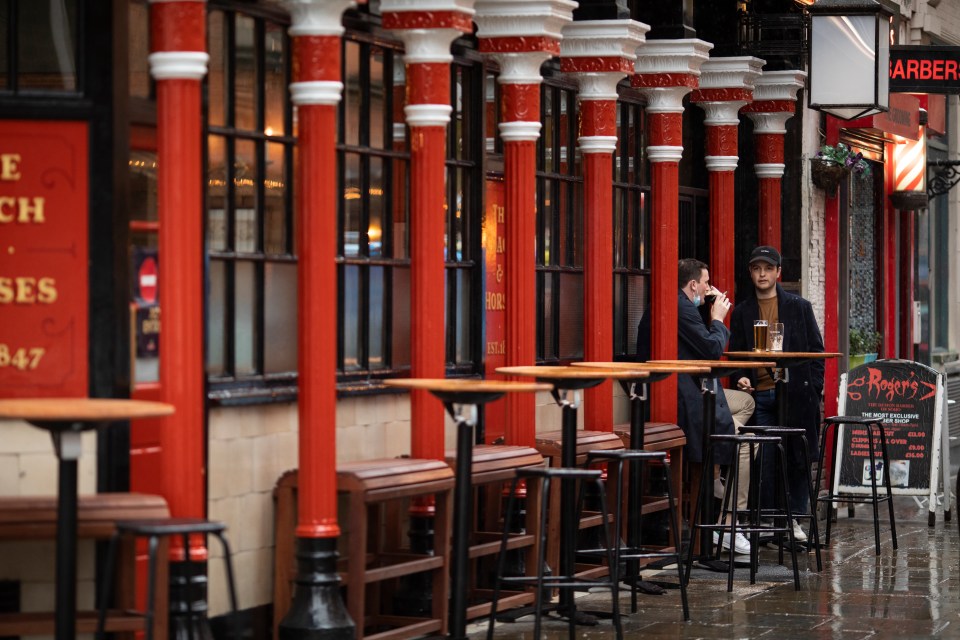We need more housing and braver, bigger ideas to revive our Square Mile

The Square Mile, like other financial centres, needs to attract more footfall, or it will become a ghost town. The power is in local politicians’ hands, they just have to be brave, writes Adam Hawksbee
The announcement of HSBC’s departure from Canary Wharf a week ago was a significant moment. In opting for a smaller site in the Square Mile, the international bank followed other employers in downsizing as the workforce goes increasingly remote. The physical footprint of businesses in our cities is rapidly changing, and politicians need to respond.
The City of London has never been bustling at the weekend. Cafes are shut, pavements echo, and flashy urban parklets host more planters than people. Post-pandemic working patterns have extended this stillness into Friday and Monday, hitting spending in restaurants and deterring tourists from exploring the area. It’s not just London’s central business district feeling the pain; Birmingham’s Colmore Row and Manchester’s Spinningfields are eerily quiet when commuters stay away.
There is a way to save our city centres and tackle our housing crisis at the same time. We should be rapidly densifying our urban cores with new homes, turning the problem of under-used office space into an opportunity.
Without action, the commercial cores of our cities will hollow out. At best they will become distinct corporate enclaves sitting apart from the bustling and diverse cities around them. At worst they will collapse – leisure and retail units will close first, and offices will follow as workers demand a better lunchtime and after-work offer.
Sixty years ago, the urbanist Jane Jacobs decried the “deathlike stillness” of New York’s financial district on evenings and weekends. Her prescription was simple: the area needed a greater mix of uses at different times of the week to generate sustainable footfall. Today, the southern tip of Manhattan is a tribute to her vision, with hundreds of shops, bars, and restaurants around a new waterfront development that attracts as many tourists as commuters. Modern research and pricing studies show how Jane Jacobs was right: people prefer mixed use neighbourhoods and will pay more to live and work in them.
Britain’s biggest cities are partially heeding this advice. Microbreweries and independent eateries are popping up in areas that were once dominated by office blocks. New pop-up cultural offers are even drawing weekend crowds to Canary Wharf.
But our central business districts are missing the core ingredient that Jacobs argued for: residents. The footfall generated by people going about their lives outside of work is the economic lifeblood of a neighbourhood, as their purchases keep local amenities open. Today, too few people call our central business districts home.
This is starting to change – the City of London is planning 1,500 new homes by 2030. But it’s way behind the international pace. Chicago is currently undergoing a rezoning revolution, creating 1,600 homes in a single street in their financial district by re-classifying commercial properties. This redevelopment isn’t just luxury tower blocks for international bankers: around a third of the properties are ring fenced for affordable housing.
Residential living in central business districts doesn’t need to be all glass and steel – these areas are packed with heritage assets like Leadenhall Market or the Birmingham Museum that could be anchors for beautiful and human-scale developments. Organisations like Create Streets have set out a practical roadmap toward the liveable, beautiful, ‘gentle’ density that Jane Jacobs wrote about half a century ago.
Local leaders need to be bold. Mayors, councillors and businesses should take radical steps to reclassify the use of city centre buildings and set higher targets for residential density. They also need to make sure licensing and permitting makes life as easy as possible for businesses to set up and stay open.
The London Plan is far too unambitious about house building in the capital, particularly when it comes to densification of the urban core. If local leaders don’t move fast enough, central government should step in and use powers from the Levelling Up Bill to “rezone” urban districts and unlock new homes. Ministers are too often blockers when it comes to new developments – away from the greenbelt it will be easier for them to side with the builders.
Britain’s central business districts need to adapt to survive. Creating thousands of new homes will stop these hubs of economic activity becoming ghost towns and ease our housing crisis. When it comes to our symbolic Square Mile, if Sadiq Khan won’t act, then Michael Gove should.